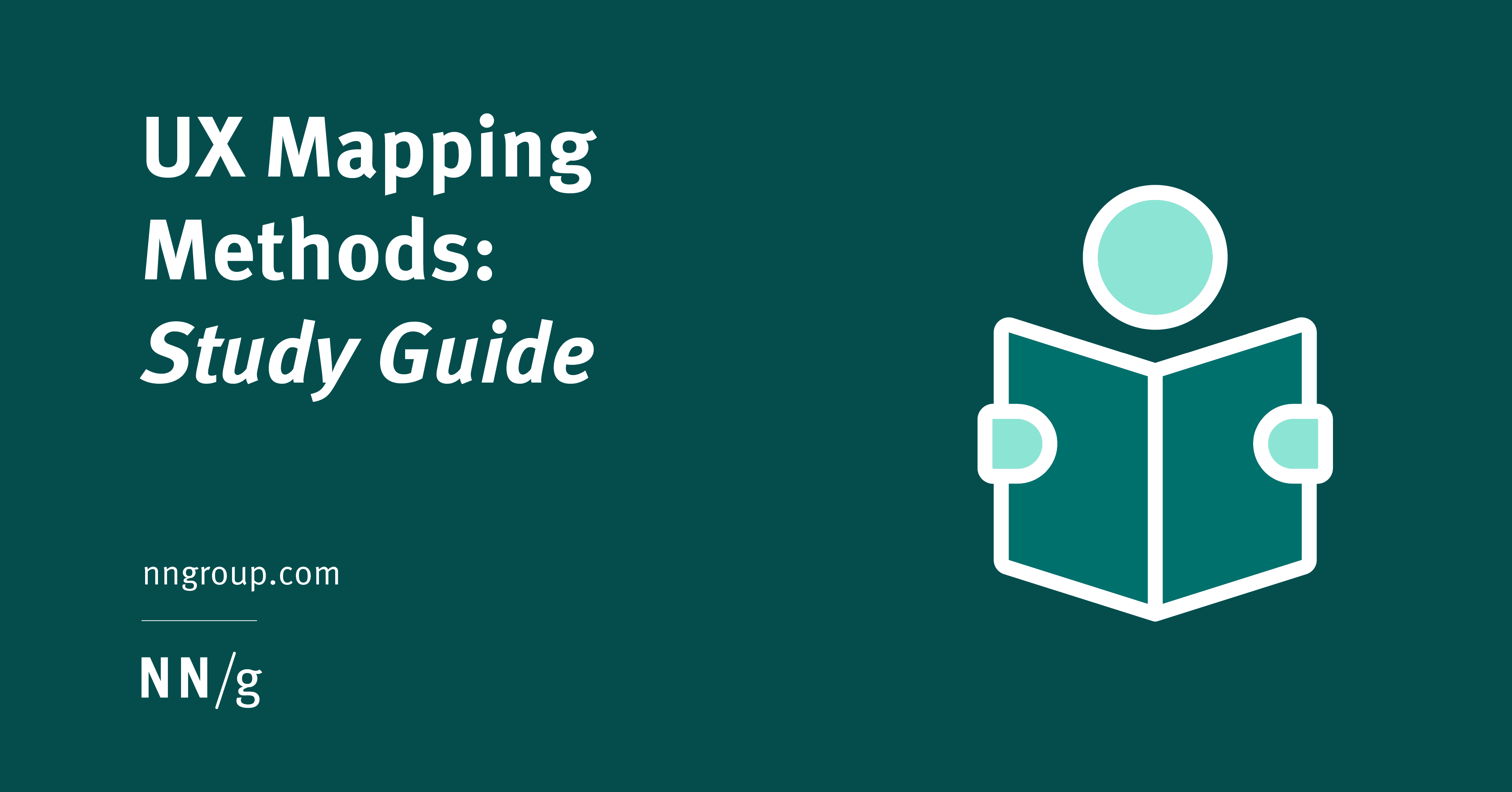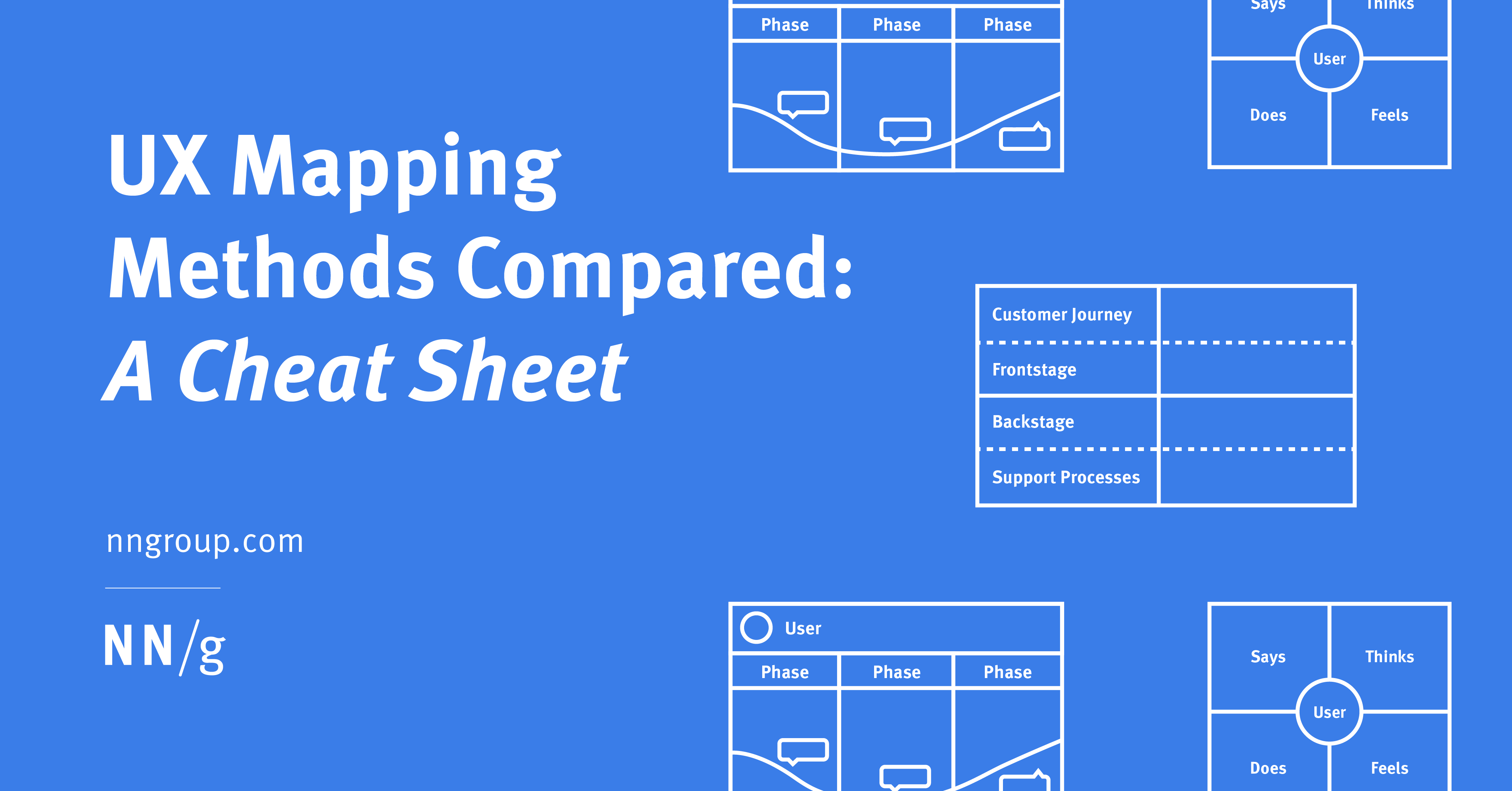Purpose: Service Blueprints help visualise the relationships between user experiences and the organisational processes behind them.
Design Thinking Phase: Define
Time: 60–90 min mapping session + 2–3 hours synthesis
Difficulty: ⭐⭐
When to use:When aligning cross-functional teams on how a service truly operatesWhen identifying breakdowns between frontstage and backstage processesWhen designing or refining complex, multi-touchpoint services
What it is
A Service Blueprint is a collaborative mapping method that visualises a user’s experience alongside the organisational systems, teams, and technologies enabling it. Unlike a journey map — which focuses solely on the customer — a blueprint extends vertically, connecting user actions to backend processes, employee roles, and service touchpoints. It’s particularly useful in identifying dependency gaps and failure points that may not be visible to users but create friction in delivery.
📺 Video by NNgroup. Embedded for educational reference.
Why it matters
Even sophisticated product experiences break when the systems behind them are misaligned. Service blueprints make the invisible visible. They expose the backstage operations, tech dependencies, and employee handoffs that directly shape the user experience. For product designers, they offer a clear lens for breaking down operational silos, unblocking service friction, and prioritising design efforts based on total service impact — not just surface pain points.
When to use
- You're launching or redesigning a highly integrated product-service system
- You're experiencing handoff issues between product, support, or operations
- You need stakeholder alignment across org silos on how a service actually gets delivered
Benefits
- Rich Insights: Helps uncover user needs that aren’t visible in metrics.
- Flexibility: Works across various project types and timelines.
- User Empathy: Deepens understanding of behaviours and motivations.
How to use it
Follow these steps to run a productive Service Blueprinting session:
- Start with a defined use case or service flow. Choose one journey from trigger to resolution.
- Map the user actions (frontstage). List what the user does step-by-step across touchpoints.
- Add visible touchpoints and employee interactions. Include channels (web, phone, app) and staff roles.
- Uncover backstage processes. List supporting systems, databases, and internal workflows behind each touchpoint.
- Highlight pain points and dependencies. Use symbols like breaks, blockers, or delays to annotate gaps.
- Cluster findings into opportunity areas. Prioritise based on effort vs impact — bring ops, tech, and CX together.
Example Output
Here's a simplified output for a fictional online pharmacy service:
- User Action: Repeats prescription via mobile app
- Touchpoint: App screen with form pre-filled from history
- Frontstage Role: Pharmacist confirms request
- Backstage Process: Backend checks last fulfilment date via CMS → triggers inventory synchronisation
- Pain Point: Real-time stock info is delayed 3–4 hours → causes unkept delivery promises in UI
Common Pitfalls
- Jumping straight to UX solutions: Focus on mapping reality before solving perceived issues.
- Only capturing frontstage steps: The power of this method lies in revealing backend complexity.
- Making it too high-level: Vague maps lead to vague actions. Be specific in steps and decisions points.
- Mapping in a silo: Always involve operations, support, and tech teams — their knowledge fills the gaps.
10 Design-Ready AI Prompts for – UX/UI Edition
How These Prompts Work (C.S.I.R. Framework)
Each of the templates below follows the C.S.I.R. method — a proven structure for writing clear, effective prompts that get better results from ChatGPT, Claude, Copilot, or any other LLM.
C.S.I.R. stands for:
- Context: Who you are and the UX situation you're working in
- Specific Info: Key design inputs, tasks, or constraints the AI should consider
- Intent: What you want the AI to help you achieve
- Response Format: The structure or format you want the AI to return (e.g. checklist, table, journey map)
Level up your career with smarter AI prompts.Get templates used by UX leaders — no guesswork, just results.Design faster, research smarter, and ship with confidence.First one’s free. Unlock all 10 by becoming a member.
Prompt Template 1: “Map a Service Blueprint from a Touchpoint Flow”
Map a Service Blueprint from a Touchpoint Flow
Context: You are a Senior Product Designer mapping user journeys into full service blueprints.
Specific Info: The existing user flow starts with [entry point] and ends with [resolution point]. Known pain points include [summarise issues]. Tech stack includes [systems/platforms].
Intent: Create a detailed service blueprint that connects user actions to frontstage, backstage, and system processes.
Response Format: Output as a structured table with the following columns: User Action, Touchpoint, Frontstage Interaction, Backstage Process, Pain Point/Opportunity.
If any steps or systems are unclear, ask clarifying questions before building the blueprint.
Then suggest a UX or ops improvement based on the most significant pain point.
Prompt Template 2: “Highlight Operational Breakdowns in Existing Flows”
Highlight Operational Breakdowns in Existing Flows
Context: You’re a UX Lead reviewing a live service blueprint post-launch.
Specific Info: The current flow includes [#] user steps and runs across [departments/platforms]. Feedback indicates [service issue/complaint].
Intent: Identify where the service is breaking down between what users expect and how internal systems or teams operate.
Response Format: Provide a list of 3–5 disconnects with their root cause and potential UX or ops resolution.
Ask clarifying questions if any part of the system or team involvement is unknown.
Then recommend a cross-functional stakeholder to interview for deeper insight.
Prompt Template 3: “Draft Blueprint Roles & Responsibilities”
Draft Blueprint Roles & Responsibilities
Context: You are preparing a cross-functional workshop to co-map a complex service.
Specific Info: Teams involved include [list teams]. Service scope is [describe high-level flow].
Intent: Outline which roles should contribute at each mapping layer (user, touchpoints, backstage, systems).
Response Format: Provide a table with 4 rows (User Layer, Frontstage, Backstage, Support Systems) and columns for: Team Involved, Input Needed, Workshop Role.
If service scope is unclear or teams are missing, ask for clarification.
Then suggest who should ‘own’ synthesis once the session ends.
Prompt Template 4: “Turn Support Tickets into Blueprint Insights”
Turn Support Tickets into Blueprint Insights
Context: You’re a Product Designer reviewing user complaints from Helpdesk records.
Specific Info: Common themes include [issue 1, issue 2]. Current flow is partially mapped, with backend data handling by [team/tool].
Intent: Surface where support issues originate in the service blueprint structure.
Response Format: Give a structured list — Ticket Issue → Related Step → Root Cause Layer → Suggested Fix (UX or Ops).
Ask for clarification if there's missing mapping of service steps.
Then propose a way to instrument key moments in code or UI to catch issues in real time.
Prompt Template 5: “Compare Two Service Blueprints”
Compare Two Service Blueprints
Context: You’re evaluating two service versions (e.g. MVP vs V2) for scope and delivery risk.
Specific Info: Key differences involve [touchpoints, workflows, tools]. Stakeholders flagged [concern].
Intent: Analyse where architectural or procedural changes may improve or harm the service.
Response Format: Provide a side-by-side comparison table with key rows: User Layer, Frontstage, Backstage, System Architecture, Risk.
Ask clarifying questions about what changed or stayed the same.
Then propose one visual to present this comparison in the next stakeholder review.
Prompt Template 6: “Cluster Blueprint Pain Points Into Opportunity Areas”
Cluster Blueprint Pain Points Into Opportunity Areas
Context: You’ve gathered a full blueprint with annotations from design, ops, and tech teams.
Specific Info: Known issues span [list areas], with user complaints on [main frustration].
Intent: Organise issues into prioritised themes for roadmap planning.
Response Format: Output a list of 3–5 themes, each with example pain points and which team should lead the fix.
If user data is thin, ask what metrics or feedback exist.
Then recommend a design artefact (heatmap, prioritisation matrix) for stakeholder alignment.
Prompt Template 7: “Script a Blueprint Co-Mapping Session”
Script a Blueprint Co-Mapping Session
Context: You are planning a 90-minute blueprinting workshop across product, ops, and CX teams.
Specific Info: The service involves [steps], with known confusion around [touchpoint or handoff].
Intent: Design a team session that surfaces system gaps and shared understanding.
Response Format: Provide a facilitation script with these sections: Agenda, Icebreaker, Mapping Prompts, Converge & Align, Next Steps.
Ask for clarity if touchpoints or teams are unclear.
Then suggest a follow-up async activity to deepen insights.
Prompt Template 8: “Design Annotated Blueprint Slides for Stakeholders”
Design Annotated Blueprint Slides for Stakeholders
Context: You need to present service blueprint findings to senior leaders outside design.
Specific Info: Blueprint highlights [#] key issues and [#] risks across systems/services.
Intent: Turn the blueprint into a clear, persuasive visual narrative.
Response Format: Provide a slide outline with titles, visuals, talking points for each phase of the blueprint.
Ask if visual examples or internal brand standards are needed.
Then recommend a single compelling user moment to lead the story.
Prompt Template 9: “Create a Service Health Dashboard Based on Blueprint Layers”
Create a Service Health Dashboard Based on Blueprint Layers
Context: You want to track long-term health of the end-to-end service experience.
Specific Info: Service includes [Number] steps and systems owned by [teams].
Intent: Build an instrumentation plan that reflects blueprint layers (user, frontstage, backstage).
Response Format: Output a dashboard spec with key metrics by layer, owners, and refresh frequency.
Ask what data is available or missing.
Then suggest critical events or fail states to track for each user-facing zone.
Prompt Template 10: “Validate a New Feature's Fit in Current Service Blueprint”
Validate a New Feature's Fit in Current Service Blueprint
Context: A new feature is being proposed that could change a core step in the service.
Specific Info: The feature would impact [system/process/touchpoint]. User goal is [define goal].
Intent: Evaluate how this fits or conflicts with existing blueprint steps and systems.
Response Format: Assess feature impact across 5 layers: User, Touchpoint, Frontstage Roles, Backstage Processes, Systems. Identify alignment or conflict.
Ask what systems or workflows this feature might bypass.
Then recommend who must be brought into discussion before dev begins.
Recommended Tools

- Mural or Miro – collaborative blueprint templates
- FigJam – helpful for integrating blueprint layers into product design workflows
- Whimsical – fast diagramming for blueprint exploration
- Airtable – useful to manage service data linked to blueprint layers
- UXPin Merge – simulate behind-the-scenes flows within design systems
Learn More







